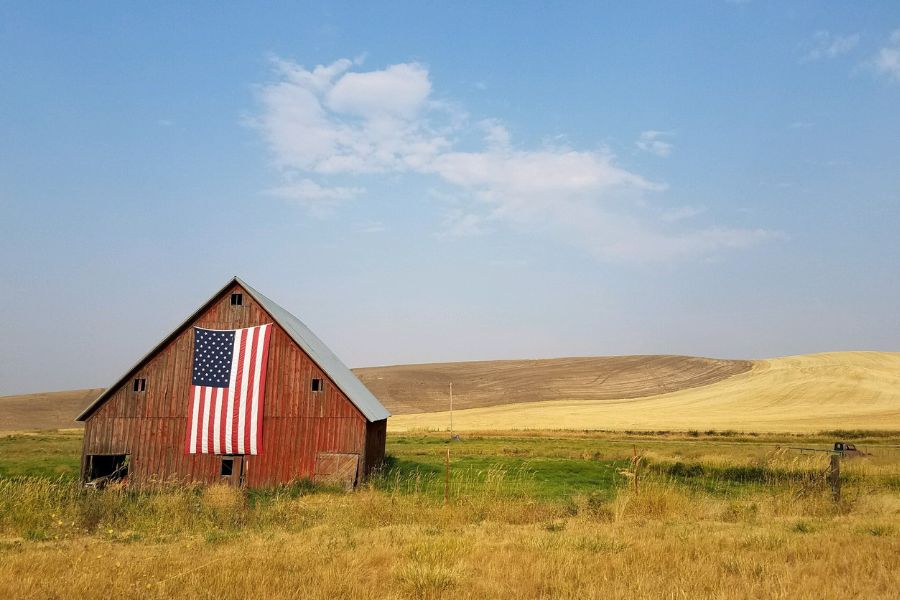
County and regional fairs across the state are just around the corner. Many of our thoughts turn to great fair food, rides, games and entertainment. Here at home in Lewis County, the Southwest Washington Fair is of particular importance to the agriculture community and the foundation by which the fair was built.
As a husband to a former FFA goat and livestock presenter, 4-H ‘Sparkles and Spurs’ parent to a daughter who loves horse riding, new owner of 5 chickens, home to a fair bunny named ‘pumpkin’, and caretaker to 6 fair goldfish thriving against all odds a year after the 2021 Southwest Washington Fair, the deeper meaning of the Southwest Washington fair permeates daily life.
I think that was the point when the Southwest Washington Fair got its start in 1877, which was to promote “the advancement of agriculture” in the community. In 1908 the State Legislature went a step further by stipulating that the Southwest Washington Fair was to be located between Chehalis and Centralia and further decreed that the Fair was to serve a six-county area consisting of Lewis, Thurston, Mason, Grays Harbor, Cowlitz, and Pacific Counties.
Just check out RCW 36.09.040 Fair Deemed County and District Fair and Agricultural Fair which states “The Southwest Washington fair shall be deemed a county and district fair for the purposes of chapter 15.76 RCW as well as an agricultural fair for the purpose of receiving allocations of funds . . . .”
The Southwest Washington Fair, like all agricultural fairs, was created to educate their communities and promote agriculture- big and small. The traditional idea of agriculture is the vast “heartland” of the Midwest, the Palouse in Eastern Washington, and sprawling farms in East Lewis County. Washington must continue to support the traditional agriculture industry, especially our small and independent farmers and ranchers by expanding market opportunities, protecting land and water rights, and continuing to diversify and innovate. We should be proud to know our Washington farmers and ranchers feed the country and world. However, it is a fragile industry.
Farmers and ranchers are price takers not price makers; which means the agriculture industry has little to no control over price setting. This leaves many farmers and ranchers vulnerable to changes in the economy and supply chain interruptions. To help keep the industry strong, we must expand educational and vocational opportunities.
Over the past 100 years, the idea of Agriculture has widened. There has even been a growing interest in small scale agriculture; like “urban farms.” In part, this is due to the great work of the Washington Farm Bureau, 4-H, FFA, and others to bring greater awareness and interest in agriculture.
Understanding where your food comes from and how it is produced provides families with invaluable knowledge and skills. Even the ‘Abbarno Family Farm’ (not a real thing) on a city lot in Centralia has chickens and a 15’ x 10’ fruit and vegetable garden. It wasn’t always that way.
In 2016, when the idea of expanding ‘urban agriculture’ to include chickens was brought to the Centralia City Council, I heard tremendous support from many neighbors, advocates, and my daughter. Urban agriculture at home and in the classroom has significant educational and financial benefits to families and our community.
In 2017, Centralia Municipal Code 20.04.07 was passed and modeled after many other municipal codes allowing for limited urban/suburban agriculture. I believe much of the interest in household farming comes from seeing and learning about farming and ranching at fairs.
Each year, the Washington State Legislature considers bills that impact the agriculture industry; some good and some bad. Unfortunately, there were some recent missed opportunities that would have increased household and classroom opportunities including Senate Bill 5643 to support organizations and youth development programs at agriculture fairs focused on farming and ranching; House Bill 1544 concerning agriculture, food and natural resource education; and Senate Bill 5641, which provides the State Building Code does not apply to temporary growing structures (greenhouses) used solely for the production of horticultural plants.
The spark of interest in farming and ranching often begins at fairs like the Southwest Washington Fair. It is woven into the fabric of our communities in Lewis County, Southwest Washington, and Washington state. We must continue to keep that important history, tradition, and economy thriving by supporting farming and ranching. The more educated we are about agriculture issues, the better prepared we are to make good decisions to support an industry that supports us.
In the coming legislative session, issues to protect and promote farm and ranch land will be very important. So will expanding the vocational and educational opportunities for students wanting to work in the agriculture industry and families that want to have their own little “urban farm.”
I look forward to working on those issues in Olympia and taking with me the information and stories I’ve learned at the Southwest Washington Fair, from local farmers and ranchers, and in my own backyard. See you at the Fair.
Rep. Peter Abbarno is an attorney with Althauser Rayan Abbarno, LLP and represents Washington State’s 20th Legislative District in the Washington State House of Representatives.





